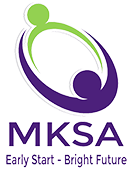6 Facts About Autism Spectrum Disorder
July 5, 2016
1. Autism and autism spectrum disorder (ASD) are terms for a group of complex neurological disorders. In 2013 all autism disorders were merged into one overall diagnosis of ASD. ASD is characterized by difficulty interacting and communicating with others. Children with ASD also tend to engage in repetitive behaviors, which may be physical (flapping hands, jumping repetitively) or vocal (repeating videos, making repetitive sounds). Play skills are also often immature and repetitive.
2. ASD symptoms and their severity vary widely. Each child on the spectrum presents with a unique array of symptoms. While all children with ASD present with some challenges in the areas of language and socialization, some may have a complete lack of spoken language and have more challenging behaviors that disrupt their daily lives and the lives of their families. The basic symptoms of autism are often accompanied by other medical conditions and challenges, which can also vary widely in severity.
3. Autism is often diagnosed between the ages of 18 months and 3 years. Studies indicate that autism is four times more common in boys than girls, and there is a higher risk if a sibling is diagnosed with autism.
4. Some indicators of ASD may include:
-doesn’t babble by 1 year
-does not speak one word by 16 months
-does not combine two words by 2 years
-does not respond to name
-loses language or social skills
-doesn’t play with toys appropriately
-excessively lines up toys or objects
-no pointing or showing
-does not imitate
-no back-and-forth conversation
-abnormal eye contact and body language; lack of understanding and use of gestures; lack of facial expressions and nonverbal communication
-difficulty in developing, maintaining and understanding relationships; absence of interest in peers
-repetitive motor movement, use of objects or speech (i.e. lining up toys, flipping objects, echolalia)
-insistence on sameness, inflexible adherence to routines (i.e. difficulties with transitions, need to take same route or eat same food every day)
5. An evaluation should be considered if your child demonstrates some of the following “red flags”:
-rarely looks you in the eye or avoids eye contact
-does not respond when you call his/her name
-does not point at something he wants
-is not beginning to imitate what you do (clapping, blowing kisses, etc.)
-has repetitive motor movements (rocking, hand flapping, jumping), repetitive actions with toys (lining up), or repetitive vocalizations
-repeatedly vocalizes parts of TV shows, books, or previously heard conversations, often days after he heard them
-has difficulty with changes in daily routines and get inordinately upset when routines may change
-show no interest in his peers and does not observe what other children are doing
6. Research shows the most effective treatment for children with ASD is ABA (Applied Behavior Analysis). Applied Behavior Analysis (ABA) focuses on the principles that explain how learning takes place. Positive reinforcement is one such principle. When a behavior is followed by some sort of reward, the behavior is more likely to be repeated. Through decades of research, the field of behavior analysis has developed many techniques for increasing useful behaviors and reducing those that may cause harm or interfere with learning. ABA is the use of these techniques and principles to bring about meaningful and positive changes in behavior. ABA therapy sessions often involve one-on-one interaction between the ABA provider and the child. These techniques can be used in structured situations such as the classroom as well as in everyday situations.
As with any concerns, speak with your pediatrician first. MKSA is always available to answer questions and make appropriate referrals. For more information about MKSA’s ABA services, click here.
Some information courtesy of autismcenter.org, National Institute of Mental Health, and DSM-5 checklist
